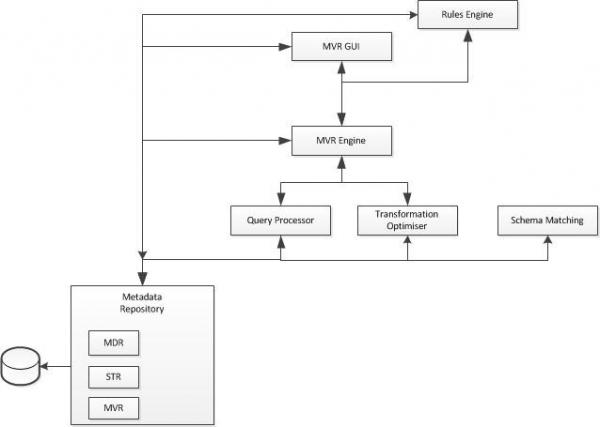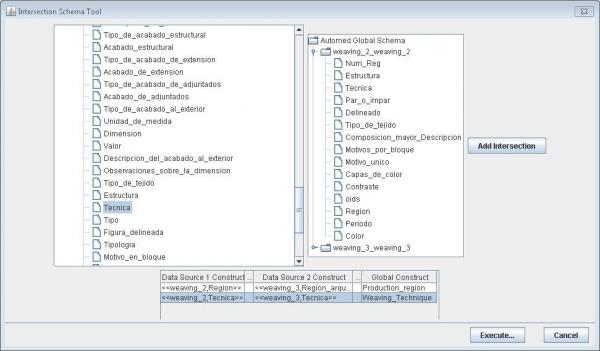|
Research Student
Richard Brownlow
Supervisors
Alex Poulovassilis
Nigel Martin
Project Sheet
|
Research Aims
Our research is motivated by the problems facing data integrators in multi-disciplinary data integration (DI) projects when adopting traditional DI methodologies and tools. Traditional DI approaches require all the semantic mappings between the different data sources to be determined before data services can be supported by the integrated resource, whereas domain data and knowledge are likely to be incrementally gathered and highly evolving, particularly in the early stages of multi-disciplinary DI projects. As a result, such DI projects are often costly and risky. To address these challenges, we are developing techniques for lightweight data integration in an incremental pay-as-you-go methodology.
Research Methodology
We undertake integration of heterogeneous data sources through the incremental specification of semantic overlaps between them, which we term intersection schemas, using a graphical tool underpinned by a formal schema transformation language. The data sources are automatically integrated under a virtual global schema after each iteration of the integration process, and data services can be supported incrementally after each iteration. We are also able to handle scenarios where different domain experts disagree on how to model the knowledge domain, which we term multiple integration viewpoints, utilising a rules-based engine to dynamically select the appropriate viewpoint at query runtime (see Figure 1).

Figure 1. Software Architecture
Research Approach
We have developed a graphical tool (see Figure 2) that supports all steps of this process, and have conducted a preliminary evaluation of our methodology through a case study in the Weaving Domain, utilising a subset of the datasets from the Weaving Communities of Practice project. We have demonstrated the potential benefits in terms of increased productivity and the ability to run high priority queries at a much earlier stage of the integration lifecycle. This allows earlier validation of both data and queries by the domain experts, with the potential to reduce both the cost and the risk of DI projects. We are currently carrying out a more extensive evaluation using a fuller dataset from the Weaving Communities of Practice project, aiming to demonstrate its usability and scalability.

Figure 2. Intersection Schema Data Integration tool
Publication
Richard Brownlow and Alex Poulovassilis: Intersection Schemas as a Dataspace Integration Technique. Proceedings of the EDBT/ICDT Workshops 2014, pp 92-99.
|